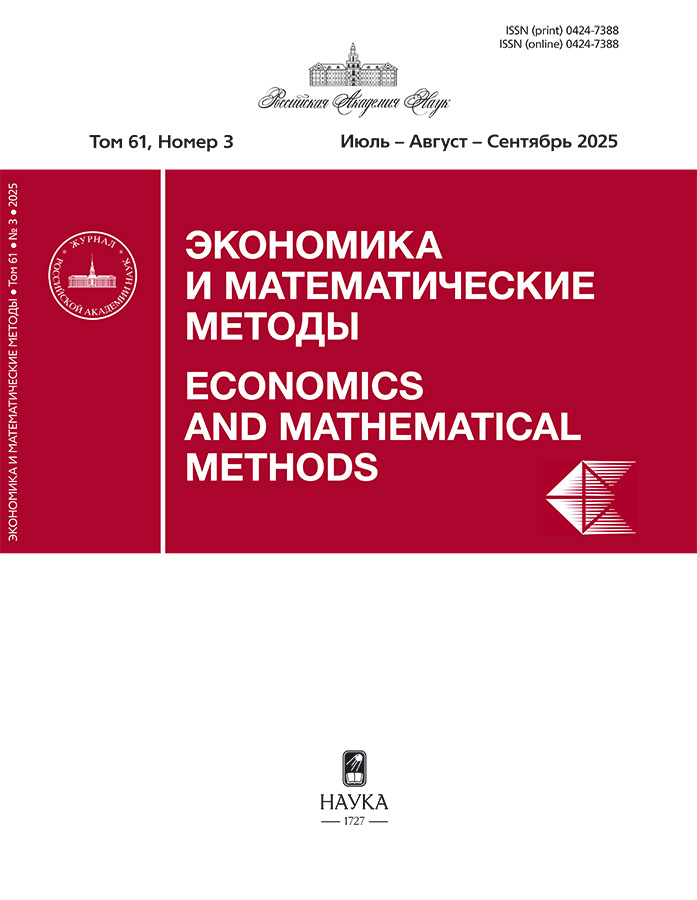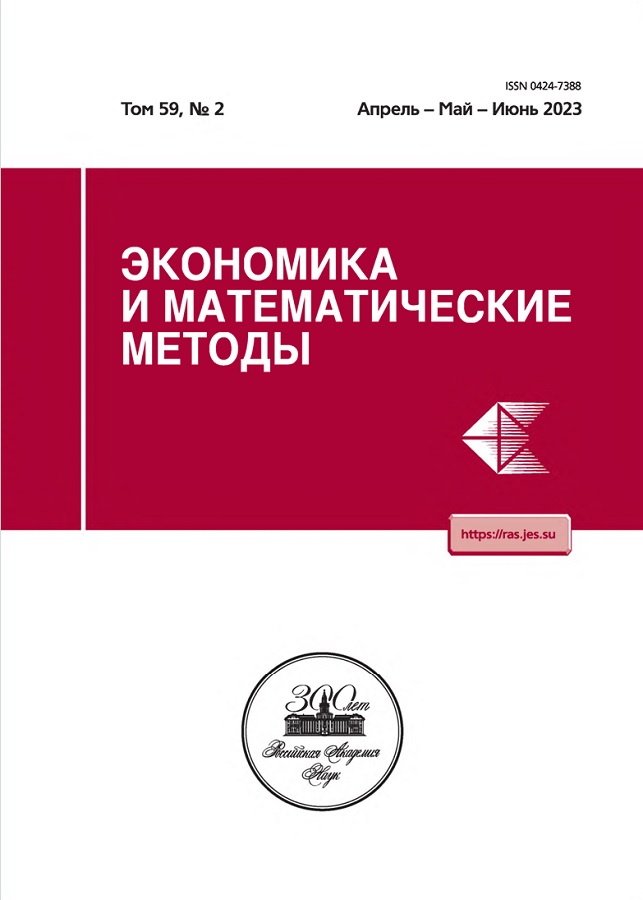Об упрощениях решения транспортных задач с экологическим критерием
- Авторы: Ассаул В.Н.1, Погодин И.Е.2
-
Учреждения:
- Государственный университет аэрокосмического приборостроения
- Военно-морской политехнический институт ВУНЦ ВМФ «ВМА»
- Выпуск: Том 59, № 2 (2023)
- Страницы: 122-127
- Раздел: Статьи
- URL: https://clinpractice.ru/0424-7388/article/view/653346
- DOI: https://doi.org/10.31857/S042473880025864-9
- ID: 653346
Цитировать
Полный текст
Аннотация
Проанализирована возможность пренебрежения штрафной составляющей при решении транспортной задачи (ТЗ) с экологическим критерием, когда наряду со сдельной оплатой назначаются фиксированные добавки, обусловленные фактом конкретной перевозки, а не объемом перевозимого груза (штрафы). Обнаружено, что в то время как пороговые отношения средних квадратических отклонений тарифов и штрафов в ТЗ с единственным оптимальным планом могут группироваться довольно плотно, в ТЗ с неединственным оптимальным планом их использование мало эффективно из-за большого разброса. Однако возможность применения предложенного авторами метода зацикливаний, когда многократно решается ТЗ, в которой к тарифам добавляются штрафы, деленные сначала на максимально допустимую перевозку, затем на план перевозки на предыдущем шаге, позволяет пренебречь штрафами, если зацикливание завершается на первом шаге. Недостатком и причиной приближенного характера метода зацикливаний является возможное наличие других циклов с локальными минимумами. Рассмотрен метод исключений, когда для ТЗ с nпоставщиками и m заказчиками исключаются клетки по убыванию штрафов при достаточности остающихся частей мощностей и емкостей. Распределение перевозок после R=(nm – (n+m – 1)) шагов позволяет не учитывать тарифов при выборе плана. Недостатком этого метода, равноценного распределению по минимальным затратам, являются затруднения при расстановке перевозок после Rшагов исключений, сделанных в предположении насыщенного использования клеток.
Ключевые слова
Об авторах
В. Николаевич Ассаул
Государственный университет аэрокосмического приборостроенияРоссийская Федерация, Санкт-Петербург
И. Е. Погодин
Военно-морской политехнический институт ВУНЦ ВМФ «ВМА»Российская Федерация, Санкт-Петербург
Список литературы
- Ассаул В.Н., Погодин И.Е. (2019). О транспортной задаче с экологическим критерием // Экономика и математические методы. Т. 55. № 2. С. 58–64.
- Ассаул В.Н. Погодин И.Е. (2022). Об одном практическом способе решения транспортной задачи с «экологическим» критерием // Вестник Бурятского государственного универ-ситета. Математика и информатика. № 3. С. 3–13.
- Бирман И.Я. (1968). Оптимальное программирование. М.: Экономика. 231с.
- Корбут А.А., Финкельштейн Ю.Ю. (1969). Дискретное программирование. М.: Наука. 368 с.
- Поляк Р.А. (1966). Об одной неоднородной транспортной задаче. В сб.: «Математические модели и методы оптимального планирования». Новосибирск: Наука. С.109-115.
- Седова С.В., Лебедев С.С. (1999). Решение одной задачи размещения с использованием уз-ловых векторов разрешающих множителей // Экономика и математические методы. Т. 35. № 3. С. 116–121.
- Седова С.В., Лебедев С.С. (2001). Метод узловых векторов целочисленного программиро-вания. 2. Задачи специального вида. Препринт ЦЭМИ. WP/2000/094. 88 с.
- Сигал И.Х., Иванова А.П. (2007). Введение в прикладное и дискретное программирование: модели и вычислительные алгоритмы. М.: Физматлит. С. 45–49.
- Фролькис В.А. (2002). Введение в теорию и методы оптимизации для экономистов. СПб: Питер. 320 с.
- Хоанг Т. (1964). Вогнутое программирование при линейных ограничениях // Доклады Ака-демии наук СССР. Т. 159. № 1. С. 32–35.
- Balinski M.L. (1961). Fixed cost transportation problem. Naval Res. Log. Quart, 8, 1, 41–54.
Дополнительные файлы











